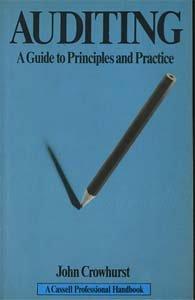Answered step by step
Verified Expert Solution
Question
1 Approved Answer
Please make sure the answers are in formula formate. Thank you. Depreciation using Excel's Absolute Cell Referencing, SLN and DDB Functions Sullivan Ranch Corporation has






Please make sure the answers are in formula formate. Thank you.
Depreciation using Excel's Absolute Cell Referencing, SLN and DDB Functions Sullivan Ranch Corporation has purchased a new tractor and has provided the information related to this purchase and its asset information. The Controller has asked you to prepare three different depreciation schedules showing the Straight-Line, Units-Of-Production, and Double- Declining Balance methods. Use the information included in the Excel Simulation and the Excel functions described below to complete the task. Cell Reference: Allows you to refer to data from another cell in the worksheet. From the Excel Simulation below, if in a blank cell, "=B6" was entered, the formula would output the result from cell B6, or 1,200 in this example. Absolute Reference: Allows you to maintain the original cell reference when a formula is copied to another cell. The cell reference is "locked" by putting a dollar sign ($) before the column and row references. By default a cell reference is relative, so when you copy a formula to another cell the values update based on a relative reference. For example, if you copy the formula =B8+B9" from cell C1 to cell C2, the formula in cell C2 will relatively update to be "=B9+B10" since the copied formula moved down one cell, the formula cell references also moved down one cell. Conversely, by adding the absolute cell reference "locks" to the equation, the formula will not change when copied to any other cell. For example, "=$B$8+$B$9" written in cell C1 is copied to cell C2, the formula in cell C2 will remain "=$B$8+$B$9". You can also use a mixed cell reference by only "locking" the column or row only ($B8 or B$8) which locks that specific column or row and the other reference becomes a relative reference and "moves" with the formula as its copied to another cell. For example, if you copy the formula "=B$8+B9" from cell C1 to cell C2, the formula in cell C2 will update to be "=B$8+B10" since the copied formula moved down one cell, the formula cell relative references also moved down one cell, but the absolute "locked" reference remained the same. Basic Math functions: Allows you to use the basic math symbols to perform mathematical functions. You can use the following keys: + (plus sign to add), - (minus sign to subtract), * (asterisk sign to multiply), and / (forward slash to divide). From the Excel Simulation below, if in a blank cell "=B3+B4" was entered the formula would add the values from those cells and output the result, or 160,000 in this example. If using the other math symbols the result would output an appropriate answer for its function. SUM function: Allows you to refer to multiple cells and adds all the values. You can add individual cell references or ranges to utilize this function. From the Excel Simulation below, if in a blank cell "=SUM(B8, B9,810)" was entered, the formula would output the result of adding those three separate cells, or 980 in this example. Similarly, if in a blank cell "=SUM(B8:B10)" was entered, the formula would output the same result of adding those cells, except they are expressed as a range in the formula, and the result would be 980 in this example. SLN function: Allows you to calculate the depreciation of an asset using the straight-line depreciation method. The syntax of the SLN function is "=SLN(cost salvage,life)" and outputs the depreciation for one period. The cost argument is the initial cost of the asset. The salvage argument is the salvage value at the end of the life of the asset. The life argument is the number of periods over which the asset is being depreciated, also called the useful life. DDB function: Allows you to calculate the depreciation of an asset using the double-declining balance method. The syntax of the DDB function is "=DDB(cost,salvage,life,period,[factor]" and outputs the depreciation for one period. The function must include the first four arguments and has a fifth optional argument. The cost argument is the initial cost of the asset. The salvage argument is the salvage value at the end of the life of the asset. The life argument is the number of periods over which the asset is being depreciated, also called the useful life. The period argument is the period for which you want to calculate the depreciation and must use the same units as the life argument. The factor argument is the rate at which the balance declines, when omitted is assumed to be 2 (the double-declining balance method.) All answers must be entered as a formula. Click OK to begin. OK ? - 5 Finance Depreciation Schedules - Excel FORMULAS DATA REVIEW FILE HOME INSERT PAGE LAYOUT VIEW Sign In Calibri - 11 AA in Paste BIU A % Alignment Number Conditional Format as Cell Formatting Table Styles Styles Cells Editing Clipboard Font A1 for Sullivan Ranch Corporation has purchased a new tractor. The followingStep by Step Solution
There are 3 Steps involved in it
Step: 1

Get Instant Access to Expert-Tailored Solutions
See step-by-step solutions with expert insights and AI powered tools for academic success
Step: 2

Step: 3

Ace Your Homework with AI
Get the answers you need in no time with our AI-driven, step-by-step assistance
Get Started


